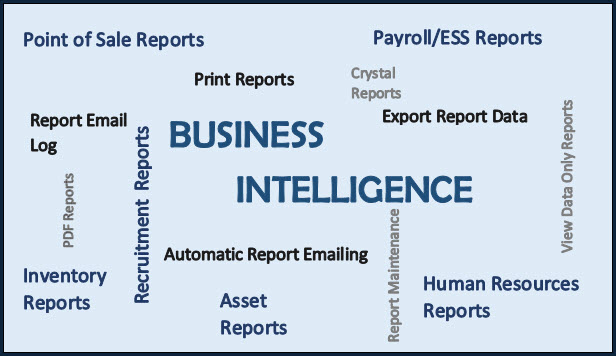 Link Technologies - LinkSOFT Documentation
Link Technologies - LinkSOFT Documentation  Link Technologies - LinkSOFT Documentation
Link Technologies - LinkSOFT Documentation
Overview
Business Intelligence within
LinkSOFT serves as a robust module dedicated to providing comprehensive
reporting and analytical capabilities across the entire application suite. Its
primary function is to enable users to effectively extract, analyse, and
visualise critical business data, facilitating informed decision-making. This
module encompasses a broad spectrum of reporting functions, automated scheduled
reports, customisable dashboards, and various data views.
Comprehensive Reporting Capabilities: Business Intelligence offers an extensive array of reports covering all LinkSOFT modules, allowing users to extract data for in-depth analysis. These reports span crucial areas such as Recruitment (e.g., Applicant Listing, Vacancy Listing), Payroll & HR (e.g., Employee Profile Report, Payslip, Time and Expense, Performance Appraisal Report), Asset Management (e.g., Asset Activity, Asset Depreciation Schedule), Helpdesk (e.g., Call Analysis Report, Call Listing Report), Inventory (e.g., Inventory Adjustment Report, Transfer/Delivery Note), and Point of Sale (e.g., various Barcode Generators, Sales Discount/Price Change Report). Many reports, particularly those related to Payroll and Point of Sale, include an option to "View Graph", which visualises the data, enhancing understanding. The system also supports configurable report rules based on user specifications and provides detailed notes to define the purpose and filters of each report.
Automated Scheduling and Email Management: A key feature is the "Report Schedule", which allows reports to be automatically generated and emailed at predefined dates and times. This includes the ability to use configurable email templates for scheduled alerts and reports, ensuring consistent communication. The "Email Log" and "Report Email Log" store detailed records of all emails sent from the system, enabling users to verify successful transmissions and identify any failed email attempts. Improvements have been made to the report email process, including better handling of data grid scripts for simplicity and performance, and ensuring that email schedulers can manage various recipient lists efficiently.
Dynamic Dashboards and Data Views: The module provides powerful "Dashboards" that are user-customisable, allowing individuals to create and interact with various visualisations like pivot grids, charts, and gauges. These dashboards offer a consolidated, real-time overview of key performance indicators and operational metrics. Additionally, "Data Views" provide the ability for users to create and display custom database views within the LinkSOFT framework, enabling flexible data exploration. These data views can be designed to handle specific time parameters, with date/time options set to conclude at the end of the day.
Integration and Performance Enhancements: Business Intelligence integrates seamlessly with other LinkSOFT modules and external systems. For instance, it provides specific reports for Financial Management Information Systems (FMIS) integration, such as Creditor GL Transactions, Fiji VAT Return Form, Licence Revenue Analysis, and Purchase Orders Not Invoiced. The system incorporates the "Link Reporter" framework, consolidating back-office reports to avoid duplication and enhance viewing capabilities, including the ability to view PDF files and manage diagrams. Ongoing performance improvements are consistently implemented for reports, focusing on efficiency and speed, particularly for handling large volumes of transactional data, and the reporting search framework has seen enhancements for better usability.
Business Intelligence contains below features:
Figure 1: Business Intelligence
Content